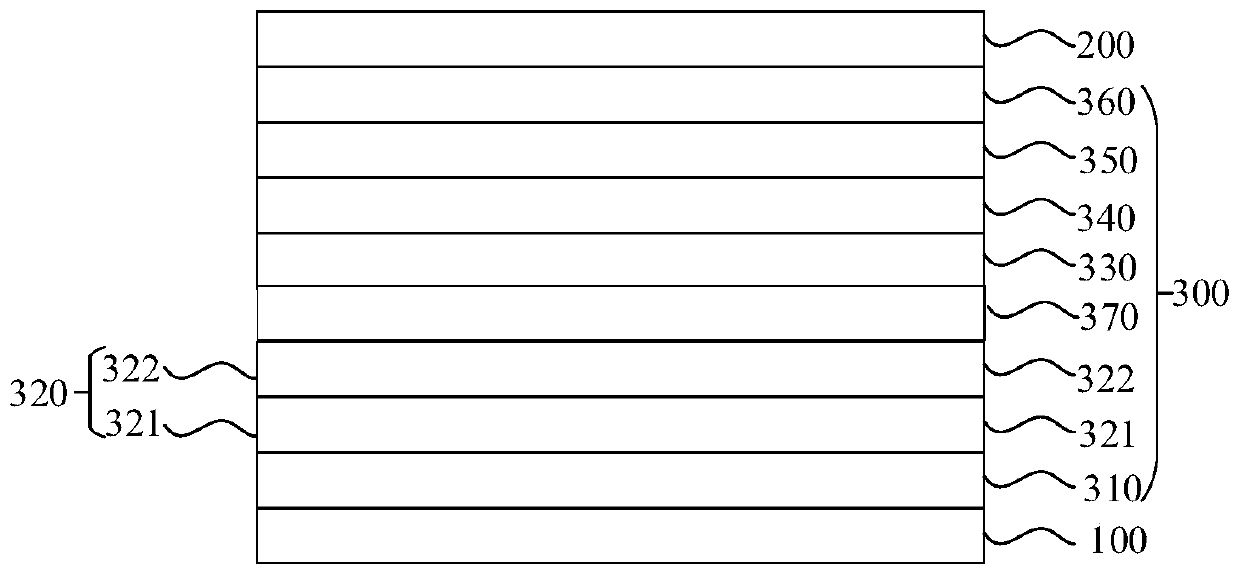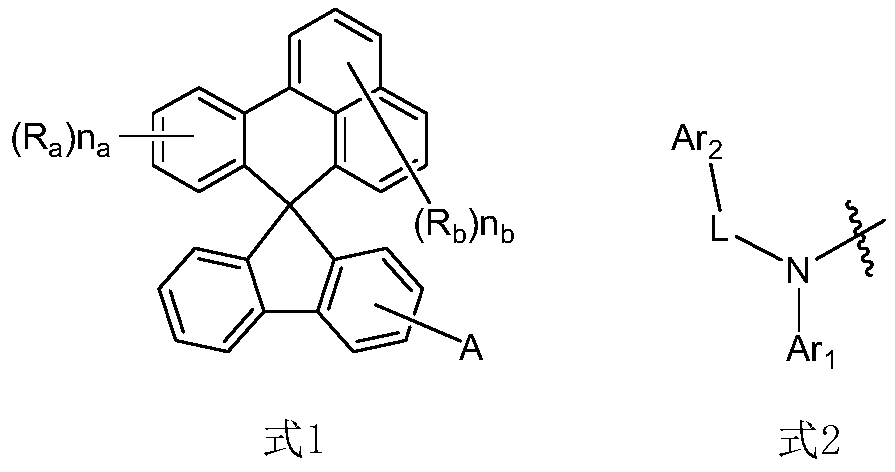Spiro compound and application thereof, and organic electroluminescent device and electronic device using same
A spiro compound, chemical bond technology, applied in the field of organic electroluminescent devices and electronic devices, can solve the problems of immaturity and huge size, and achieve the effect of good film formation, large molecular weight and strong rigidity
- Summary
- Abstract
- Description
- Claims
- Application Information
AI Technical Summary
Problems solved by technology
Method used
Image
Examples
Embodiment 1
[0264] Embodiment 1: red organic electroluminescent device
[0265] The anode was prepared by the following process: the thickness was The ITO substrate (manufactured by Corning) was cut into a size of 40mm×40mm×0.7mm, and it was prepared into an experimental substrate with cathode, anode and insulating layer patterns by photolithography process, using ultraviolet ozone and O 2 :N 2 Plasma surface treatment was performed to increase the work function of the anode (experimental substrate) and to remove scum.
[0266] HAT-CN was vacuum evaporated on the experimental substrate (anode) to form a thickness of The hole injection layer (HIL), and compound 1 is vapor-deposited on the hole injection layer to form a thickness of The first hole transport layer (HTL-1).
[0267] TCTA is vacuum evaporated on the first hole transport layer to form a thickness of The second hole transport layer (HTL-2).
[0268] On the second hole transport layer, CBP is used as the host while dopi...
Embodiment 2- Embodiment 22
[0272] An organic electroluminescent device was fabricated by the same method as in Example 1, except that compounds shown in Table 16 below were used instead of Compound 1 when forming the first hole transport layer.
Embodiment 23
[0286] Example 23: Green organic electroluminescence device
[0287] The anode was prepared by the following process: the thickness was The ITO substrate (manufactured by Corning) was cut into a size of 40mm×40mm×0.7mm, and it was prepared into an experimental substrate with cathode, anode and insulating layer patterns by photolithography process, using ultraviolet ozone and O 2 :N 2 Plasma surface treatment was performed to increase the work function of the anode (experimental substrate) and to remove scum.
[0288] Vacuum evaporation of F4-TCNQ on the experimental substrate (anode) to form a thickness of The hole injection layer (HIL), and NPB is evaporated on the hole injection layer to form a thickness of The first hole transport layer (HTL-1).
[0289] Compound 15 is vacuum evaporated on the first hole transport layer to form a thickness of The second hole transport layer (HTL-2).
[0290] On the second hole transport layer, CBP: Ir(ppy) 3 Co-evaporated with a ...
PUM
 Login to View More
Login to View More Abstract
Description
Claims
Application Information
 Login to View More
Login to View More - R&D
- Intellectual Property
- Life Sciences
- Materials
- Tech Scout
- Unparalleled Data Quality
- Higher Quality Content
- 60% Fewer Hallucinations
Browse by: Latest US Patents, China's latest patents, Technical Efficacy Thesaurus, Application Domain, Technology Topic, Popular Technical Reports.
© 2025 PatSnap. All rights reserved.Legal|Privacy policy|Modern Slavery Act Transparency Statement|Sitemap|About US| Contact US: help@patsnap.com



